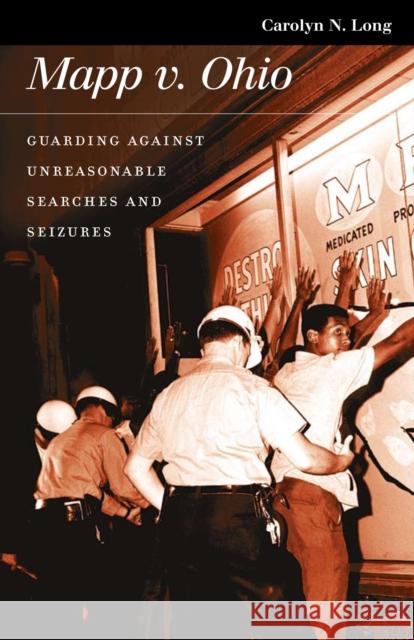Mapp V. Ohio: Guarding Against Unreasonable Searches and Seizures » książka
topmenu
Mapp V. Ohio: Guarding Against Unreasonable Searches and Seizures
ISBN-13: 9780700614400 / Angielski / Twarda / 2006 / 240 str.
Mapp V. Ohio: Guarding Against Unreasonable Searches and Seizures
ISBN-13: 9780700614400 / Angielski / Twarda / 2006 / 240 str.
cena 402,37
(netto: 383,21 VAT: 5%)
Najniższa cena z 30 dni: 386,23
(netto: 383,21 VAT: 5%)
Najniższa cena z 30 dni: 386,23
Termin realizacji zamówienia:
ok. 30 dni roboczych
Bez gwarancji dostawy przed świętami
ok. 30 dni roboczych
Bez gwarancji dostawy przed świętami
Darmowa dostawa!
Although she came to be known as merely "that girl with the dirty books," Dollree Mapp was a poor but proud black woman who defied a predominantly white police force by challenging the legality of its search-and-seizure methods. Her case, which went all the way to the Supreme Court, remains hotly debated and highly controversial today.
In 1957, Cleveland police raided Mapp's home on a tip--from future fight promoter Don "the Kid" King--that they'd find evidence linked to a recent bombing. What they confiscated instead was sexually explicit material that led to Mapp's conviction for possessing "lewd and lascivious books"--a conviction that initially pitted Ohio police and judges against Mapp and the American Civil Liberties Union. At stake was not only the search-and-seizure question but also the "exclusionary rule" concerning the use of evidence not specified in a search warrant. Carolyn Long follows the police raid into Mapp's home and then chronicles the events that led to the Court's 5-4 ruling in Mapp v. Ohio (1961), which redefined the rights of the accused and set strict limits on how police could obtain and use evidence. Long traces the case through the legal labyrinth, discusses the controversies it created, and assesses its impact on police behavior, as well as subsequent prosecutions and convictions of the accused. She also analyzes Justice Tom Clark's creative use of Mapp's case to overturn Wolf v. Colorado, which had ruled that the Fourth Amendment's protection against unreasonable searches applied only to federal law, and presents Justice John Harlan's strong federalist-based dissent. As entertaining as it is informative, Long's book features a host of intriguing characters: Mapp, her seasoned and determined attorney, A. L. Kearns, and police sergeant Carl Delau, among others. Combined with her concise and insightful explanations of key legal principles--including the exclusionary rule itself--Long's deft narrative provides an ideal format for teachers and students in criminology, legal history, constitutional law, and political science, as well as anyone who loves a good story. The Mapp case is still much debated, especially in light of the recent reauthorization of the U.S. Patriot Act and the free rein given to law enforcement officers in matters of search and seizure. Long's compelling study thus poses important questions regarding privacy and individual rights that still matter today, even as it also illuminates one of the keystones of the Warren Court's criminal procedure revolution.










